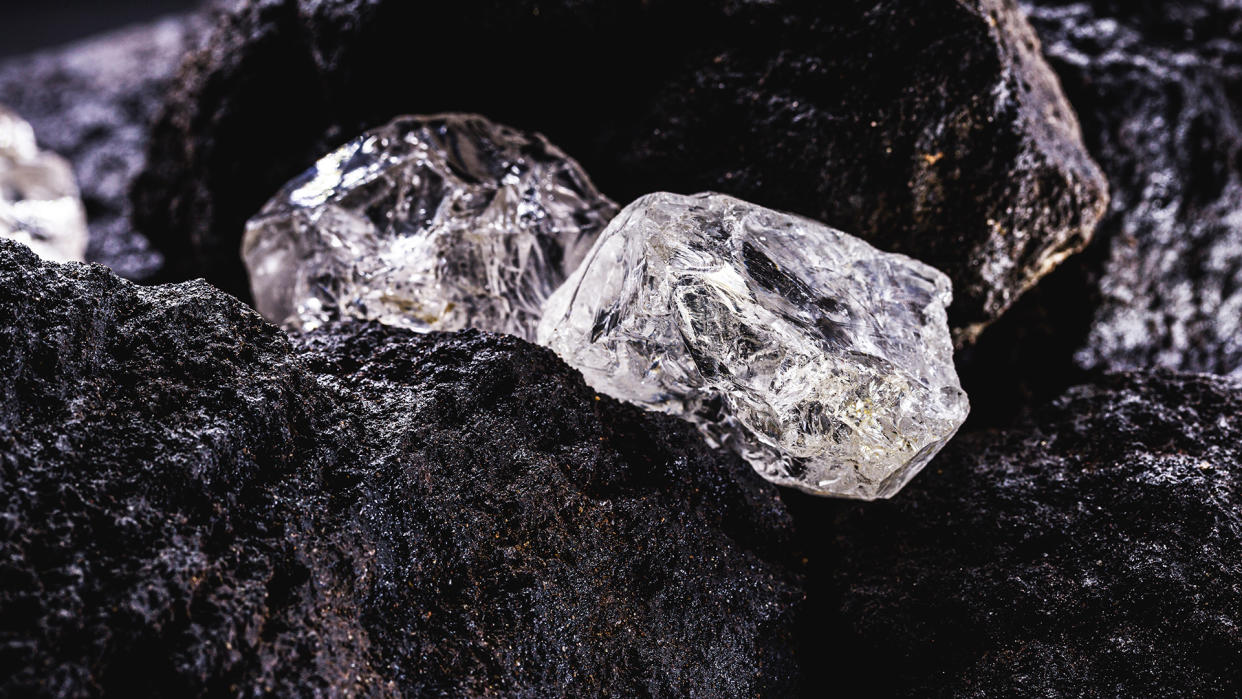Listen to diamonds erupting from deep within Earth in striking animation

When supercontinents break up they likely trigger dramatic volcanic eruptions that pull diamonds from the deep crust and mantle and deliver them rapidly to the surface. Now, you can hear the "song" of these kimberlite eruptions.
A new video, based on a 2023 paper in the journal Nature, shows the last 240 million years of continents fragmenting and merging. Pulses of orange light indicate kimberlite eruptions. Each pulse is accompanied by a pitch, with higher latitudes represented by higher pitches, and lower latitudes represented by lower pitches.
Meanwhile, the background melody hints at what's happening with the tectonic plates. When continents are fragmenting and rifting apart, the sounds are brighter and in major keys. When they are mostly merging, the notes are in minor keys and sound darker.

RELATED STORIES
—Underwater volcanic eruption gives birth to new island in the Pacific
—The 12 biggest volcanic eruptions in recorded history
—Is anything harder than a diamond?
The result is an auditory and visual representation of Earth's natural history. The kimberlite eruptions occur in places where diamonds are frequently found today, particularly in southern Africa. The eruptions begin shortly after the breakup of the supercontinent Pangaea, spreading inward over millions of years toward the interiors of the newly forming modern-day continents. In their 2023 paper, Thomas Gernon, a geoscientist at the University of Southampton in the U.K., and his colleagues found that this pattern is caused by a series of instabilities that occur under the rifting continents as a supercontinent breaks up. The breakup progressively destabilizes neighboring areas under the continent, which seems to be enough to prompt the sudden eruptions of kimberlites.
A scientific paper on the new "sonification" was published Jan. 5 in the journal Nature News Earth & Environment. The sonification was created by SYSTEM Sounds, a science-art outreach organization that frequently works with NASA to represent cosmological objects like black holes with sound.

